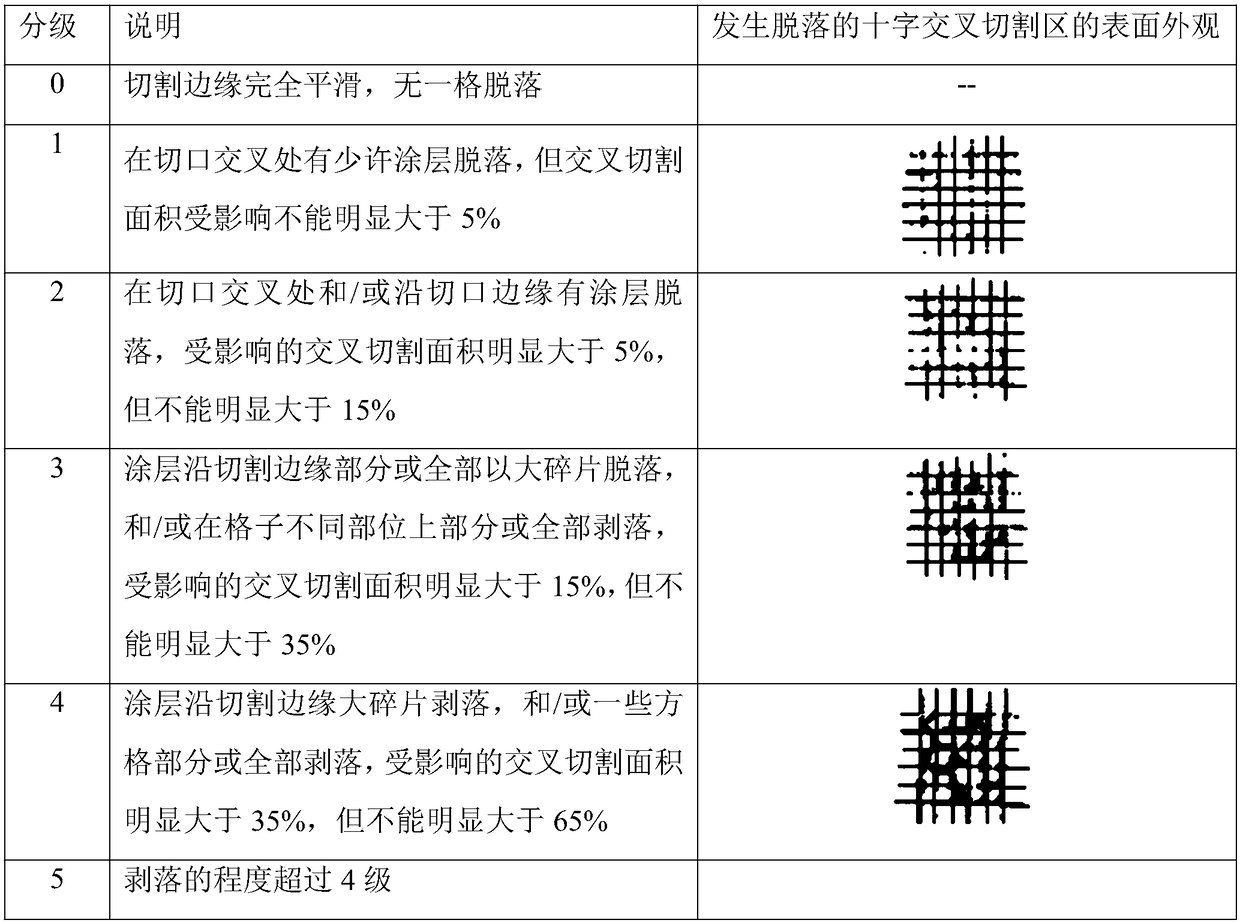UV photocuring anti-fogging agent and preparation method thereof
A light-curing and anti-fogging agent technology, applied in the chemical field, can solve problems affecting the properties of transparent substrates, and achieve the effects of large-scale promotion and application, convenient construction, and high adhesion
- Summary
- Abstract
- Description
- Claims
- Application Information
AI Technical Summary
Problems solved by technology
Method used
Image
Examples
Embodiment 1
[0053] Specific steps are as follows:
[0054] (1) Take 0.5 part of nano-silica powder and 0.5 part of nano-anatase titanium dioxide into 5 parts of deionized water, then add 0.02 part of TDL-ND1, heat to 50°C and ultrasonic treatment to form a uniform dispersion;
[0055] (2) Then add 0.01 parts by weight of 3-(trimethoxysilyl) propyl acrylate and 0.1 parts by weight of 3-(trimethoxysilyl) propyl trimethacrylate into the dispersion of (1) Ester, and adding 0.02 parts by weight of 1M hydrochloric acid dropwise to react for 6 hours, centrifuging, filtering, drying, pulverizing, sieving, and processing to obtain modified nanoparticles;
[0056] (3) Take 1 part of the modified nanoparticles obtained in (2), add 5 parts of ethanol, 0.005 parts of dispersant, and disperse at 20,000 rpm for 30 minutes to obtain a uniform dispersion;
[0057] (4) Then add 0.2 part of polyethylene glycol diacrylate, 0.1 part of 3-sulfonic acid propyl methacrylate potassium, 0.1 part of 1-hydroxycyclohexyl phe...
Embodiment 2
[0062] Specific steps are as follows:
[0063] (1) Take 1 part of nano-silica, then add 6 parts of deionized water and 0.008 parts of polyethylene glycol, and heat it to 50°C for ultrasonic treatment to form a uniform dispersion;
[0064] (2) Then add 0.1 parts by weight of polyethylene glycol monomethyl ether trimethoxysilane to the dispersion of (1), and add 0.01 parts by weight of 1M hydrochloric acid dropwise to react for 20 hours, centrifuge, filter, dry, crush, Sieving and processing to obtain modified nanoparticles;
[0065] (3) Take 1 part of the modified nanoparticles obtained in (2), add 6 parts of ethanol, 0.01 part of sodium dodecylbenzene sulfonate, and disperse at 6000-10000 revolutions / min for 30 minutes to obtain a uniform dispersion;
[0066] (4) Then add 0.5 parts of polyethylene glycol dimethacrylate, 0.3 parts of allyloxy nonylphenol polyoxyethylene ether, and 0.2 parts of 1-hydroxycyclohexyl phenyl ketone to the dispersion of (3) And 0.01 part of dodecyl triethox...
Embodiment 3
[0071] (1) First add 1 part of nano-titanium dioxide, then add 6 parts of deionized water and 0.008 parts of polyacrylamide, heat to 60°C and ultrasonic treatment to form a uniform dispersion;
[0072] (2) Subsequently, 0.15 parts by weight of octylphenol polyoxyethylene ether and 0.02 parts by weight of alkylnaphthalene sulfonate were added to the dispersion of (1), and 0.01 parts by weight of 1M hydrochloric acid were added dropwise to react for 15 hours, then centrifuged, Filtering, drying, crushing, sieving, and processing to obtain modified nano titanium dioxide particles;
[0073] (3) Take 1 part of the modified nano titanium dioxide particles obtained in (2), add 8 parts of n-butanol, 0.01 part of dimethyl silicone oil, 8000 revolutions / min, high speed shear dispersion for a period of time to obtain a uniform dispersion,
[0074] (4) Then add 0.3 parts of polyethylene glycol diacrylate, 0.3 parts of allyloxy nonylphenol polyoxyethylene ether, 0.2 parts of 1-hydroxycyclohexyl p...
PUM
| Property | Measurement | Unit |
|---|---|---|
| thickness | aaaaa | aaaaa |
| hardness | aaaaa | aaaaa |
| thickness | aaaaa | aaaaa |
Abstract
Description
Claims
Application Information
 Login to View More
Login to View More - R&D
- Intellectual Property
- Life Sciences
- Materials
- Tech Scout
- Unparalleled Data Quality
- Higher Quality Content
- 60% Fewer Hallucinations
Browse by: Latest US Patents, China's latest patents, Technical Efficacy Thesaurus, Application Domain, Technology Topic, Popular Technical Reports.
© 2025 PatSnap. All rights reserved.Legal|Privacy policy|Modern Slavery Act Transparency Statement|Sitemap|About US| Contact US: help@patsnap.com

